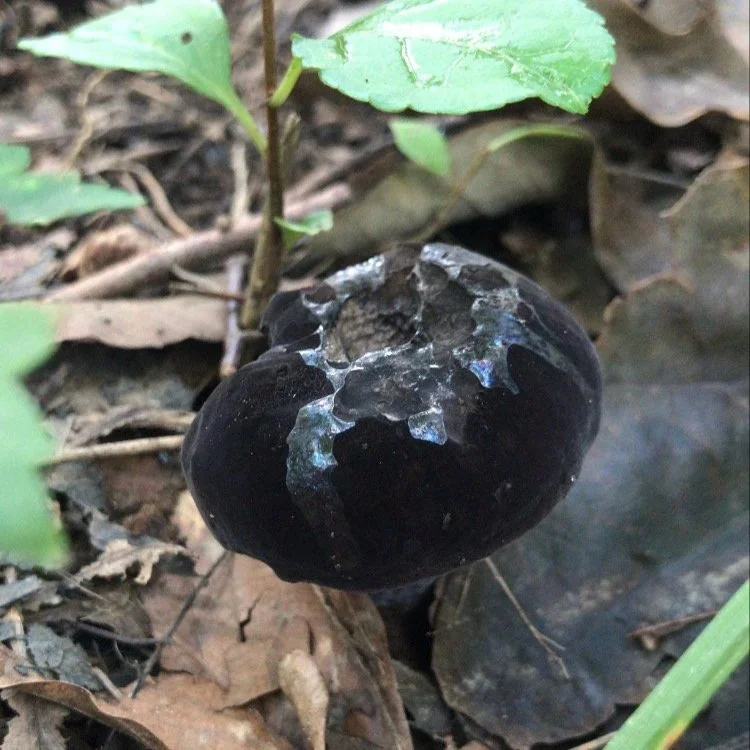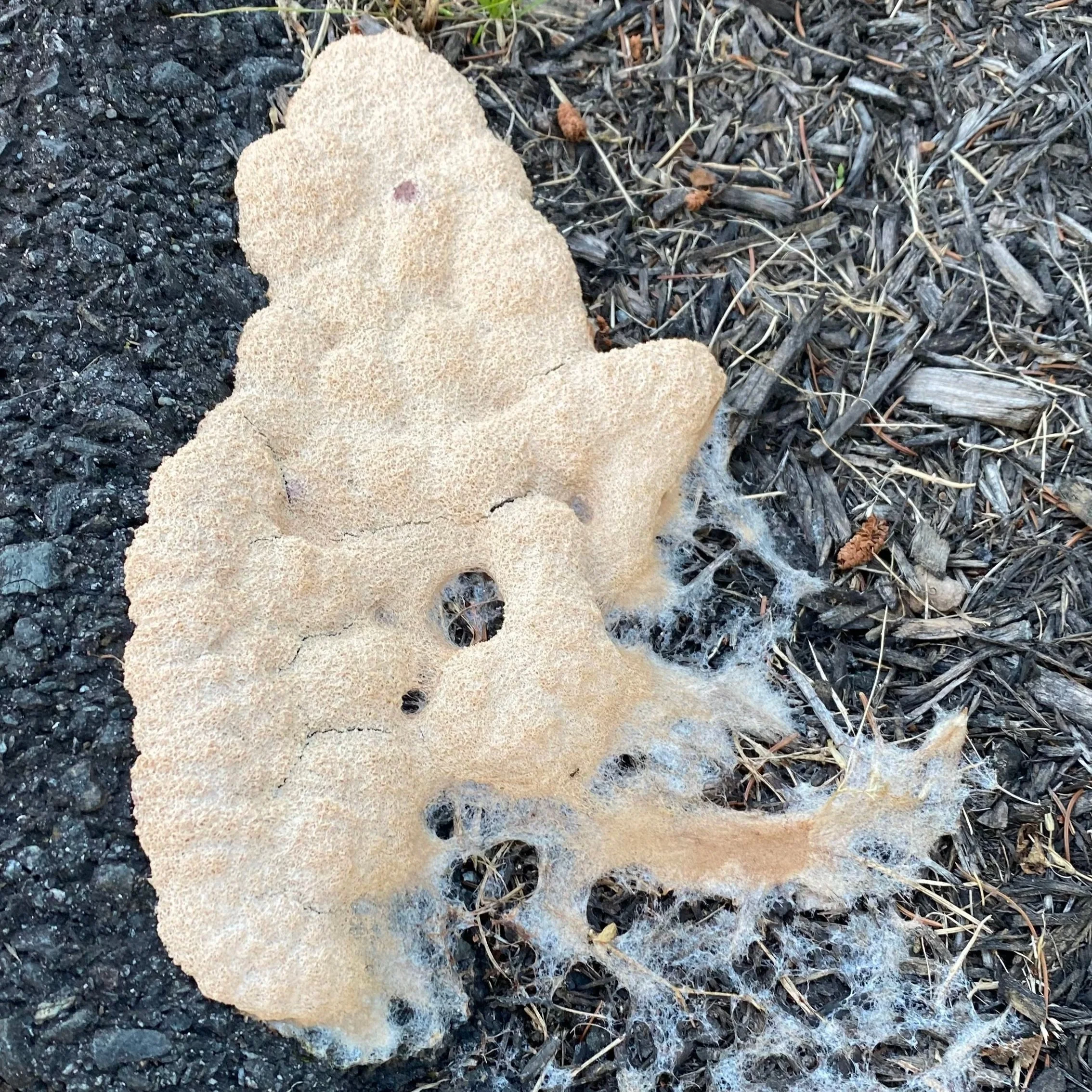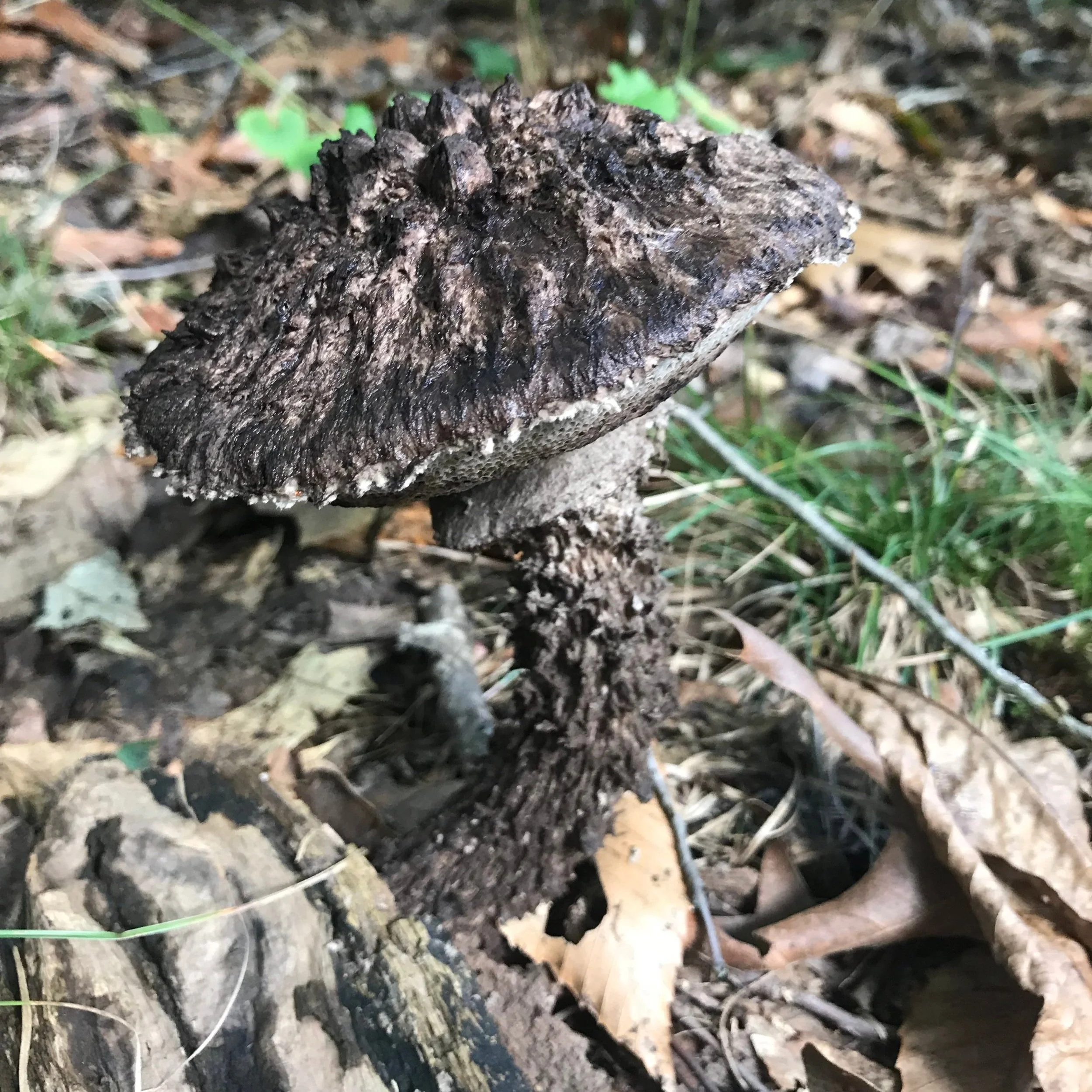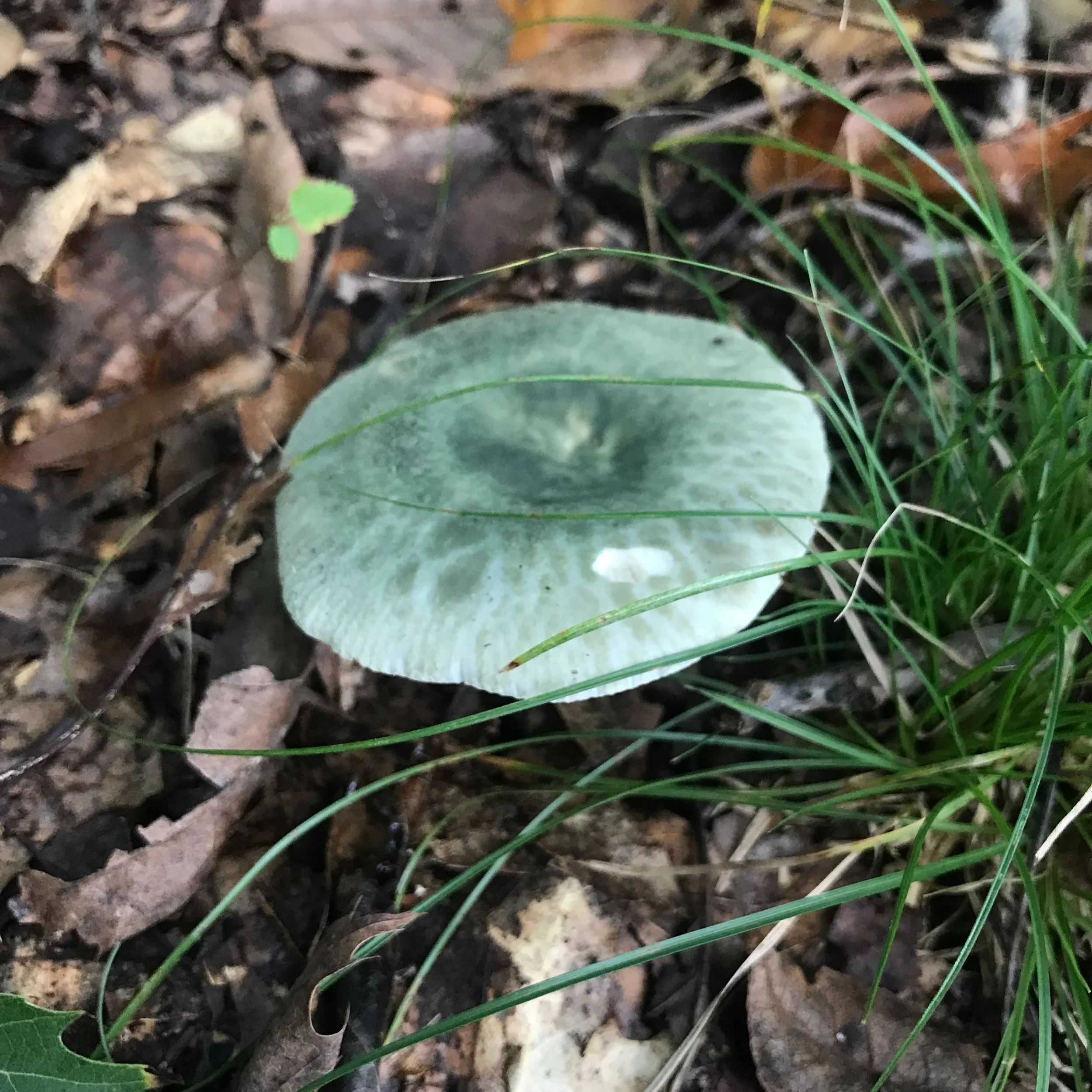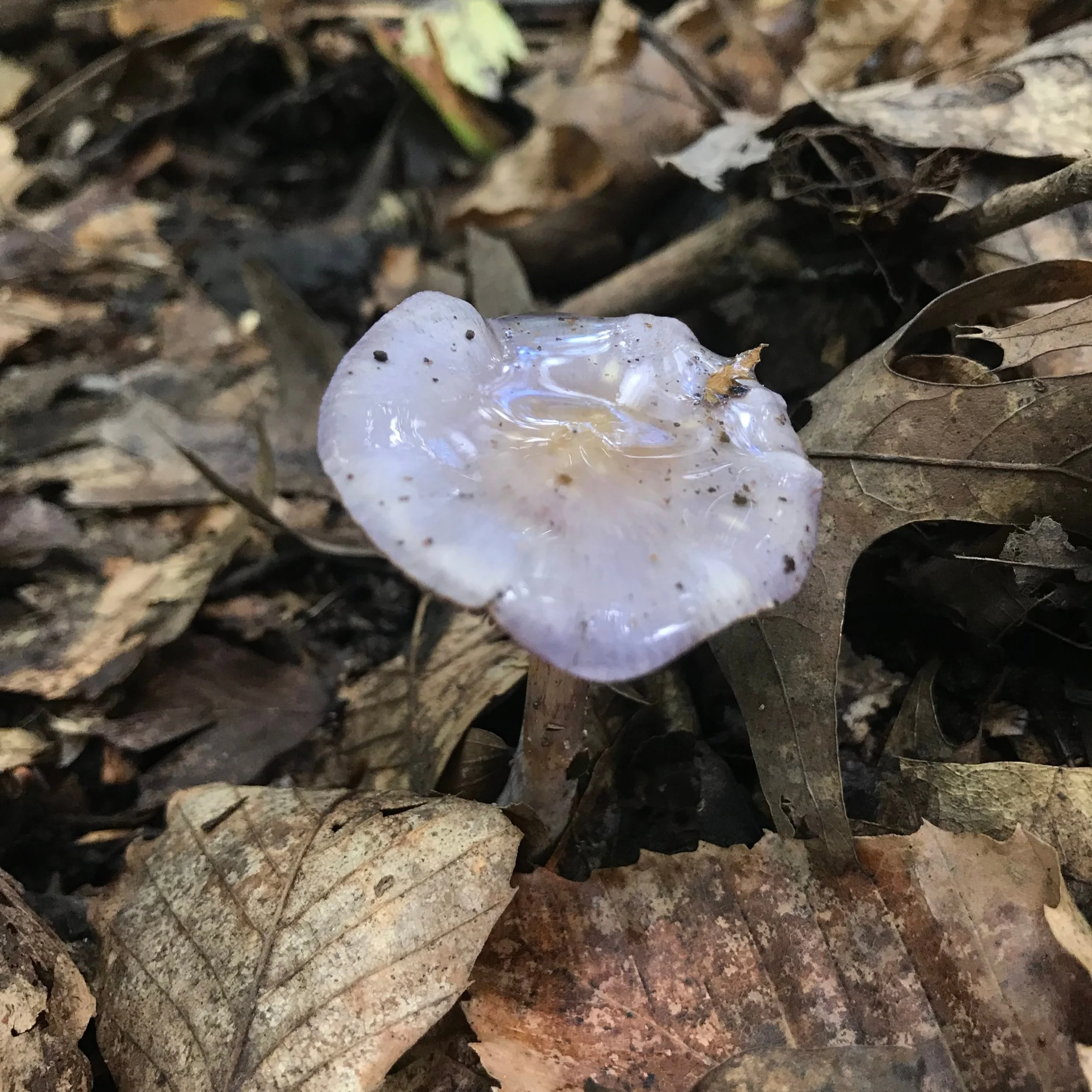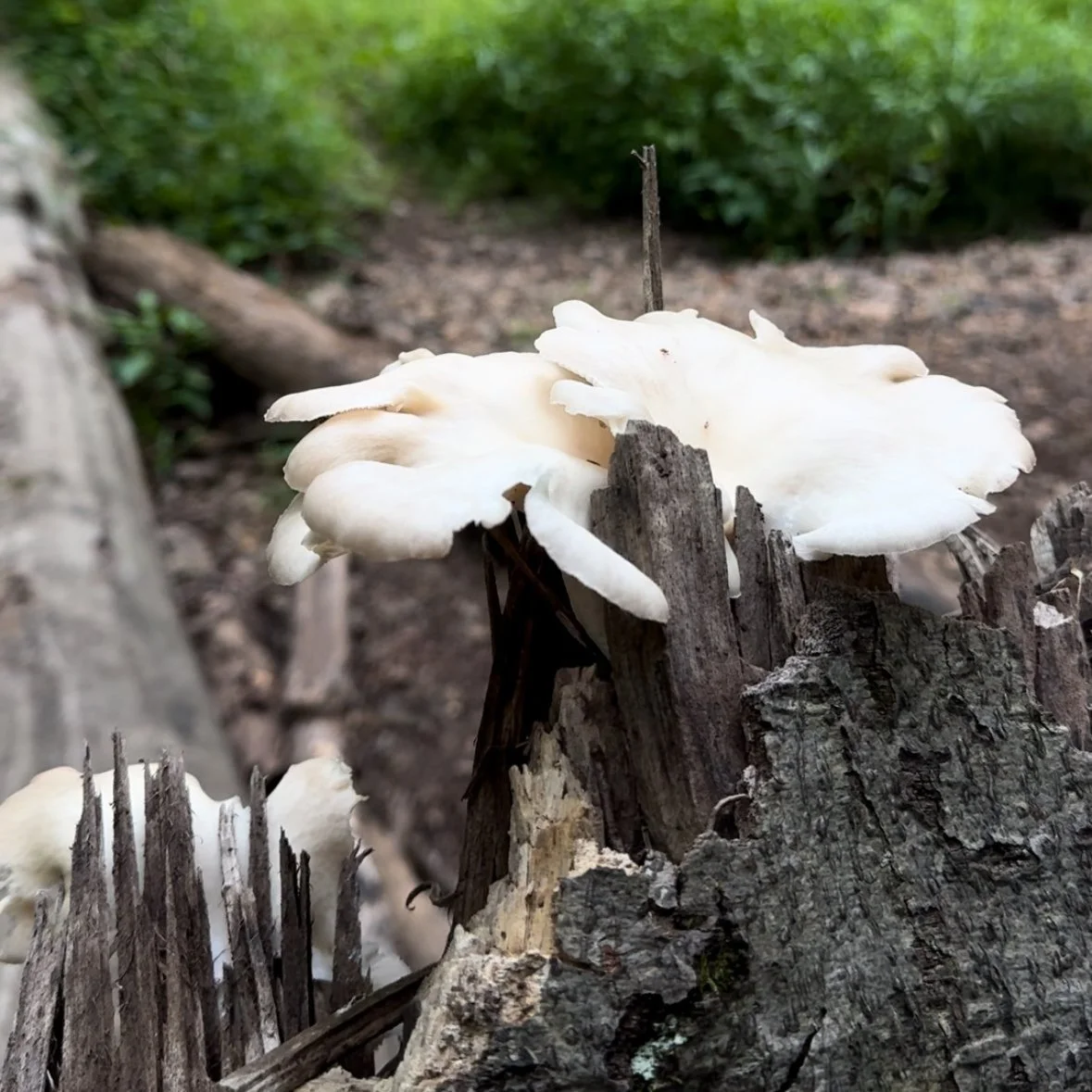Mushroom Facts
“Nature alone is antique, and the oldest art a mushroom”
Common name: Devils Dipstick
Scientific name: Mutinus elegans
Family: Phallaceae (stinkhorns)
Found in: New Jersey
Fun fact: The stalk is covered with a foul-smelling slimy green-brown spore mass (gleba) on the upper third of its length.
More info: Flies and other insects feed upon the slime which contains the spores, assisting in their dispersal. The species name “elegans” is derived from the Latin word meaning "graceful" or "elegant". Has antibiotic activity. The immature egg-forms of M. elegans are edible, but not recommended due to strong odor and slimy texture.
Common name: Black Velvet Bolete
Scientific name: Tylopilus alboater
Family: Boletaceae
Found in: New Jersey
Fun fact: The mushroom is edible and generally considered one of the best edible Tylopilus species.
More info: The caps of young specimens have a velvety texture and are covered with a whitish to gray powdery coating; the cap often cracks as it gets older. The pores on the underside of the cap are small and pinkish. When cut, the flesh is white and does not change color significantly. The species name alboater means "white and black". Can be used for dye.
Common name: Blushing Rosette
Scientific name: Abortiporus biennis
Family: Meruliaceae
Found in: New Jersey
Fun fact: often it grows as an amorphous mass of irregular maze-like pores exuding blobs of red-brown juice that eventually dry to leave brown stains of the pore surface
More info: This wood-rotting fungus sometimes forms very attractive rosettes
Common name: Dog Vomit Slime Mold
Scientific name: Fuligo septica
Family: Physaraceae
Found in: New Jersey
Fun fact: Slime molds have a high resistance to toxic levels of metals. The resistance to extreme levels of zinc appears to be unique to F. septica. The mechanism of this metal resistance is now understood: F. septica produces a yellow pigment called fuligorubin A, which has been shown to chelate metals and convert them to inactive forms.
More info: also called “scrambled egg slime”. Shows antibiotic activity and cytotoxic effects on KB cells (human epithelial cell line derived from a carcinoma of the nasopharynx) in studies. In Scandinavian folklore, Fuligo septica is identified as the vomit of troll cats (the familiar of a witch)
Common name: Common puffball
Scientific name: Lycoperdon perlatum
Family: Agaricaceae
Found in: Pennsylvania
Fun fact: When mature it becomes brown, and a hole in the top opens to release spores in a burst when the body is compressed by touch or falling raindrops.
More info: It is off-white with a top covered in short spiny bumps or "jewels". It is edible when young (but avoid confusion with immature fruit bodies of poisonous Amanita- it is essential to cut the mushroom in half vertically. A true puffball will have a solid white interior with no gills or cap structures, whereas some toxic mushrooms have developing gills inside)
Common name: White Saddle
Scientific name: Helvella crispa
Family:
Found in:
Fun fact:
More info:
Common name: Old Man of the Woods
Scientific name: Strobilomyces floccopus
Family:
Found in:
Fun fact:
More info:
Common name: Eastern Black Trumpet
Scientific name: Craterellus fallax
Family:
Found in:
Fun fact:
More info:
Common name: Green Russula
Scientific name: Russula virescens
Family:
Found in:
Fun fact:
More info:
Common name: Viscid Violet Cort
Scientific name: Cortinarius iodes
Family:
Found in:
Fun fact:
More info:
Common name: Oyster Mushroom
Scientific name: Pleurotus sp.
Family:
Found in:
Fun fact:
More info:
Common name: Common Fiber Vase
Scientific name: Thelephora terrestris
Family:
Found in:
Fun fact:
More info:

